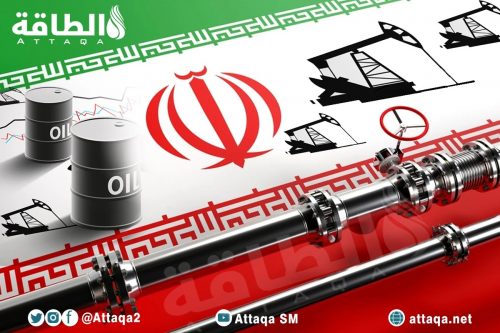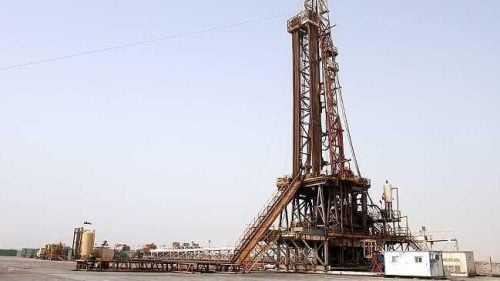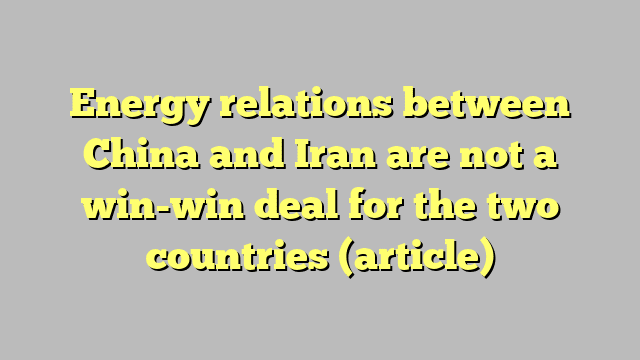Read in this article
- • Production from the Yadavaran field will start in the first half of 2023
- • In recent years, Iran has signed long-term cooperation documents with China and Russia
- • On the first day of the Iranian President’s visit to China, the two sides signed 20 cooperation documents
- • The Iranian leadership is working on the assumption that the sanctions will continue, and if they are lifted, they will be reimposed
- • China is not looking for political investment in the Iranian energy sector
After the United States withdrew from the Joint Comprehensive Plan of Action, energy relations between China and Iran deepened, especially since only a number of Russian and Chinese companies were active in Iranian oil and gas fields.
Currently, Russian companies are present in the Aban and Bidar al-Gharb fields, and they recently signed a contract with the Iranian Ministry of Oil to work in the Bidar al-Sharq, Cheshmeh Khosh and Dalbiri fields, most of which are located in Khuzestan, near the Iran-Iraq border.
In the past two decades, increasing oil and gas production from shared oil and gas fields has been a priority for all governments in Iran, which the persistence of sanctions has rendered them unable to increase capacity and production in joint fields as planned.
The Yadavaran field is one of the fields shared between Iran and Iraq, as the Chinese company Sinopec used to operate the second phase of the development plan, which increased energy relations between China and Iran.
It should be noted that production from the Yadavaran field will start in the first half of 2023, so that the operational operations of the plan to increase production will begin after nearly 6 years of suspending the development plan.
Development of the second phase of the Yadavaran field
Discussions regarding the development of the second phase of the Yadavaran field are underway between Sinopec and the National Oil Company (NIOC) of both China and Iran.

Fereydoun Kord Zanganeh, director of investment and business at the National Iranian Oil Company, said that the company had been discussing a deal with Sinopec for the past 12 months, and that the discussions were aimed at finalizing a $3 billion deal between China and Iran.
The development of the Yadavaran field is part of Iran’s plans to increase crude oil production by exploiting the West Karoon group, which consists of 5 fields, South Azadegan, North Azadegan, North Yaran, South Yaran and Yadavaran.
Sinopec was awarded the contract to work in the Yadavaran field in 2007, on the condition that first-phase production be increased to 85,000 bpd by 2010-2011, and 100,000 bpd added by 2015.
Sinopec failed to achieve these targets, and in 2014 production was stable at only 50,000 barrels per day. The company managed to achieve its target in 2016, after the National Iranian Oil Company issued warnings to it, and by 2017 Sinopec’s production reached 105 barrels per day.
Fereydoun Kord Zanganeh stated that Sinopec has not yet officially announced that it will not cooperate in the development of the Yadavaran field.
Noting that the development of the Yadavaran field is one of the priority projects of the National Iranian Oil Company, Kord Zanganeh said that the early production plan for the Yadavaran field is in line with the master plan of the Chinese company.
The scope of cooperation between China and Iran, through Sinopec and the national oil company, will focus on the integration of the joint Azadegan field and the development of joint oil fields with Iraq.
Cooperation between China, Iran and Russia
In recent years, Russia, China and Iran have signed long-term cooperation documents.

The implementation of a 25-year agreement between China and Iran is among the objectives of Iranian President Ibrahim Raisi’s visit to China.
It is alleged that if this cooperation document is implemented, China will invest 280-400 billion dollars in Iran, and this investment will depend on the Chinese currency, the yuan.
Moreover, on the first day of the Iranian president’s visit to China, the two sides signed 20 cooperation documents. The important and noteworthy point is that there is no mention of signing a memorandum of understanding for cooperation in the fields of energy, especially oil and gas, i.e. the sector that includes the largest share of economic relations between the two countries.
On the other hand, some prominent energy experts believe that China and Iran have different goals for cooperation in the energy sector, especially in the oil fields.
According to Specialized Energy Platform Editorial Advisor Dr. Anas Al-Hajji, “China can help Iran develop oil fields shared with Iraq, but it should be noted that Iran is developing oil fields strategically, not economically.
For its part, the Iranian leadership is working on the assumption that the sanctions will continue, and if they are lifted, they will be reimposed.
China’s investment in Iranian energy
A study on China’s investment in the Iranian energy industry (exploration and production) in the past two decades showed that China is not looking for political investment in the Iranian energy sector.
The main reason for Chinese companies to invest in Iran’s energy sector is to reap high profits with low risks.
It was claimed that Chinese investments in the North Azadegan, Yadavaran and Masjid Suleiman fields served as a test run for a higher share of the Iraqi market and strengthen energy relations between China and Iran.

In a way, these investments prepared the ground for the presence of Chinese companies in high-profit projects, such as the South Azadegan field and the second phase of the Yadavaran field, which is 70% complete in the first phase.
China is Iran’s first export destination and Iran’s second import source, according to the latest Iranian customs report. Iranian oil sales have increased this year, and China is said to be the main customer for Iranian oil.
It is claimed that if the Iranian president’s visit leads to an increase in the purchase of oil from Iran, it will be important for the currency market, because the increase in the sale of Iranian oil will increase the country’s access to foreign exchange resources.
If, during Raisi’s visit to Beijing, China agrees – regardless of US pressure – to the plan to increase sales of Iranian oil, currency market buyers may hesitate to buy dollars.
The Chinese have taken the imposition of sanctions on Iran as an excuse, and they say that Iran’s situation is not normal, and they should wait a little while, and they even made the signing of the second stage of development subject to Beijing’s political approval, but during these years, they were indifferent to all the ultimatums of the National Oil Company.
And in the event that China and Iran relations do not progress, through Beijing developing the second phase of the Yadavaran field, local Iranian companies must replace Sinopec, but the question is: Can Iranian companies meet the needs of local oil and gas fields, especially the Yadavaran field?
In the past two years, China has boosted its economic and energy influence with Saudi Arabia, the United Arab Emirates, Kuwait, Iraq, and even Afghanistan, and China appears to have removed Iran from its investment priorities.
Iran cannot play an important role in China’s energy security, which would prefer that the country’s energy security not depend on Iranian energy resources.
* Dr. Omod Shoukry, senior advisor on foreign policy and energy geopolitics, is the author of “US Energy Diplomacy in the Caspian Basin: Changing Trends Since 2001.”
*This article represents the opinion of the author, and does not necessarily reflect the opinion of the energy platform.
related topics..
Also read..

Leave a Reply